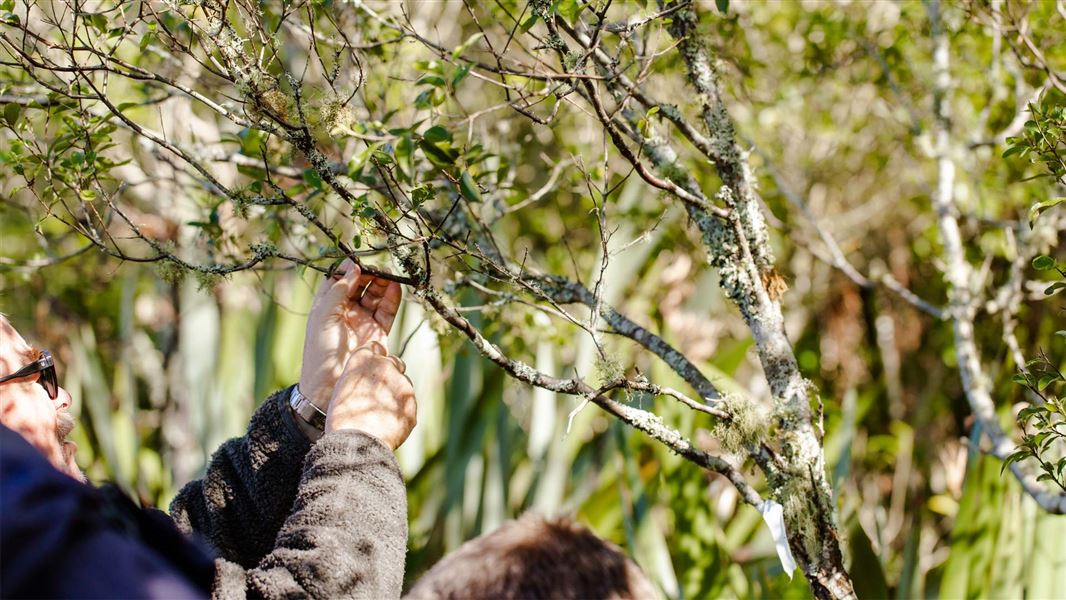Archived content: This media release was accurate on the date of publication.
Date: 19 May 2023
The 10-year plan to re-establish tāpia/mistletoe (Ileostylus micranthus and Tupeia antarctica) in Pirongia Forest Park has been launched by DOC, with the support of local iwi, hapū, and the community.
On Saturday 13 May 2023, members of the Pirongia Te Aroaro ō Kahu Restoration Society, Te Pahu Landcare, Waipa District Council, Pirongia Forest Park Lodge, Ngāti Hikairo and Ngāti Apakura gathered alongside DOC to mark the latest piece of work in a 22-year effort to bring native taonga species, including mistletoe, back to the maunga.
Long-term pest control efforts on the maunga have made it possible.
“Mistletoe is a highly desirable food for possums, and when combined with vegetation clearance, have caused the dramatic decline of these plants,” says Biodiversity Ranger Cara Hansen.
“Successful pest control by the Pirongia Te Aroaro ō Kahu Restoration Society, DOC, and Waikato Regional Council has made it a safe environment to bring this plant, and other species, back to the maunga.”
The intensive management of rats and possums on Pirongia has seen kōkako and the North Island robin/toutouwai reintroduced by the restoration society. Other native birds such as rifleman/titipounamu are thriving. Other rare plant species, such as pua ō te reinga/wood rose (Dactylanthus taylorii) are clawing their way back from the brink.
Opening with karakia, while a fantail/pīwakawaka weaved its way between speakers, Saturday’s event involved a ceremonial placement of mistletoe seeds on a kōhūhū (Pittosporum tenuifolium) host tree, followed by a hands-on workshop led by DOC staff for community groups, mana whenua and landowners to learn the translocation technique and how to help mistletoe thrive.
“DOC is working closely with mana whenua to observe tikanga so we can incorporate it into everything we do,” says Community Senior Ranger, Andrew Styche.
“Mistletoe seed used in the translocation have been sourced from populations at Maungatautari and Lake Okareka near Rotorua, and we’ve been able to do this with mana whenua and community support.”
The project is part of a long-term vision for Pirongia Forest Park, one held by community groups, Waikato Regional Council and DOC for decades.
“What we’re doing here is not just for today, but the future,” says Andrew Styche. “It’s about bringing species back for future generations.”
It was a sentiment supported by those in attendance, including the weaving fantail.
“It’s a tohu,” says Lees Seymour (Ngāti Hikairo) of the fantail at the event.
“It’s a sign of the spiritual nature of te ao Māori and recognising the mahi everyone is putting in. It’s a sign of something significant, and a sign of thanks.”
More information
Mistletoes are semiparasitic plants with green leaves or stems that photosynthesise but rely on a host tree or shrub for water and nutrients.
Contact
For media enquiries contact:
Email: media@doc.govt.nz
